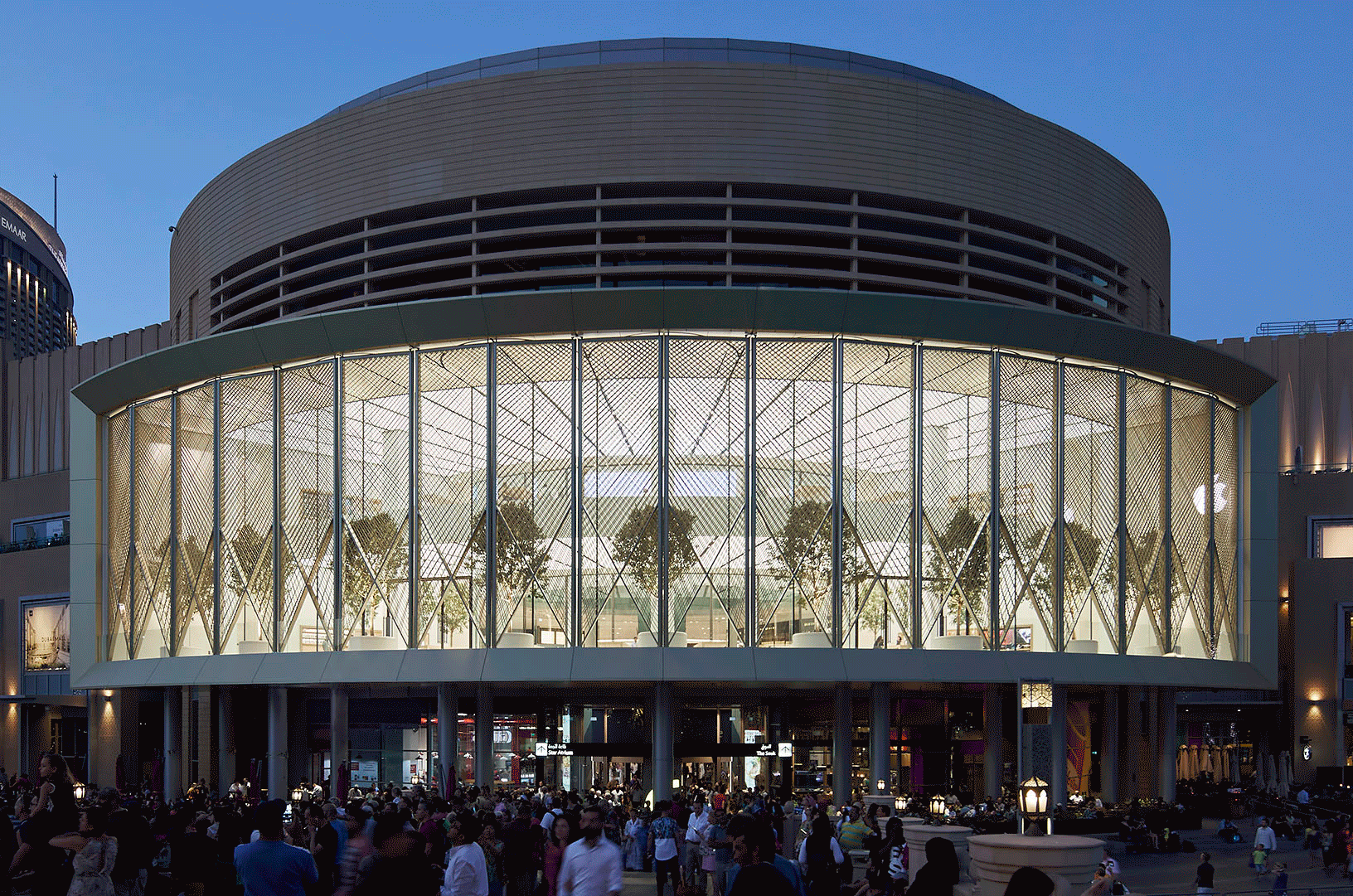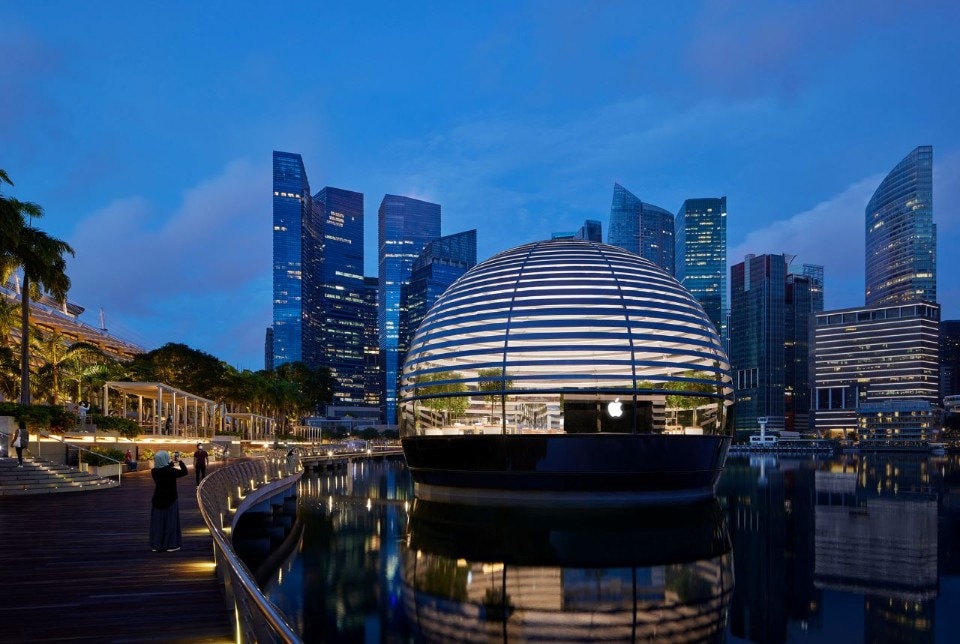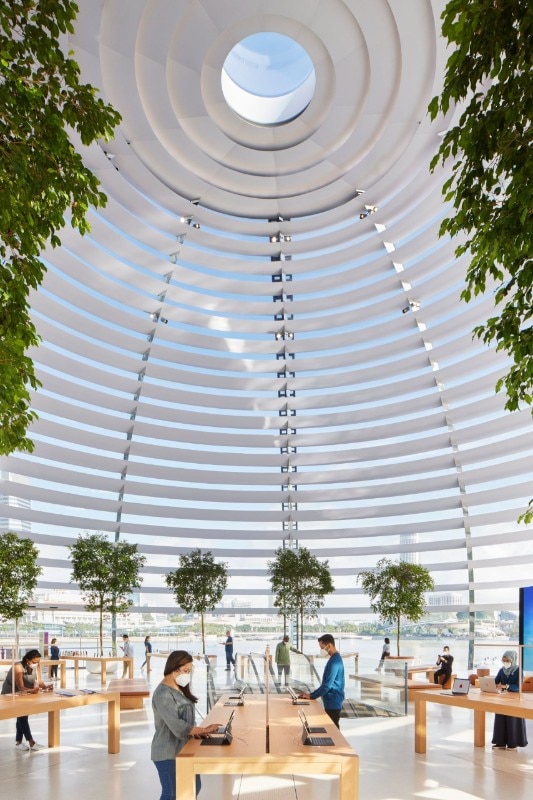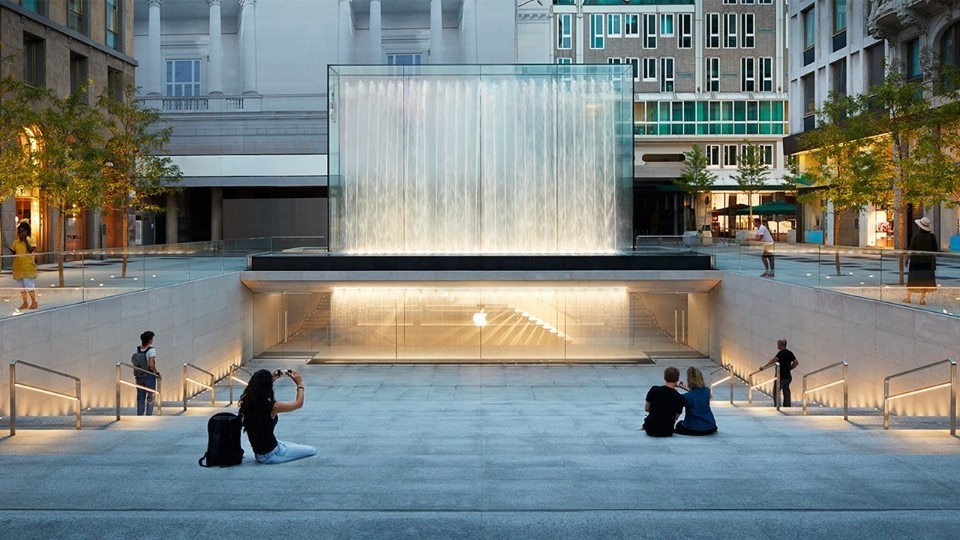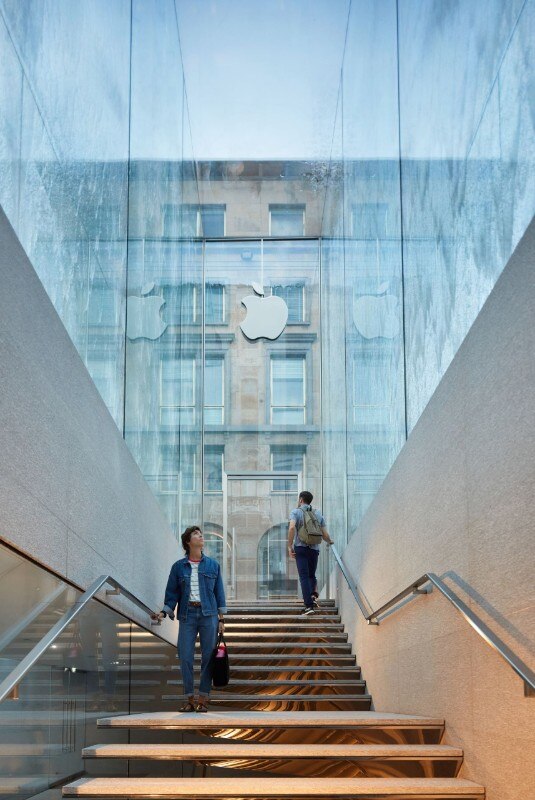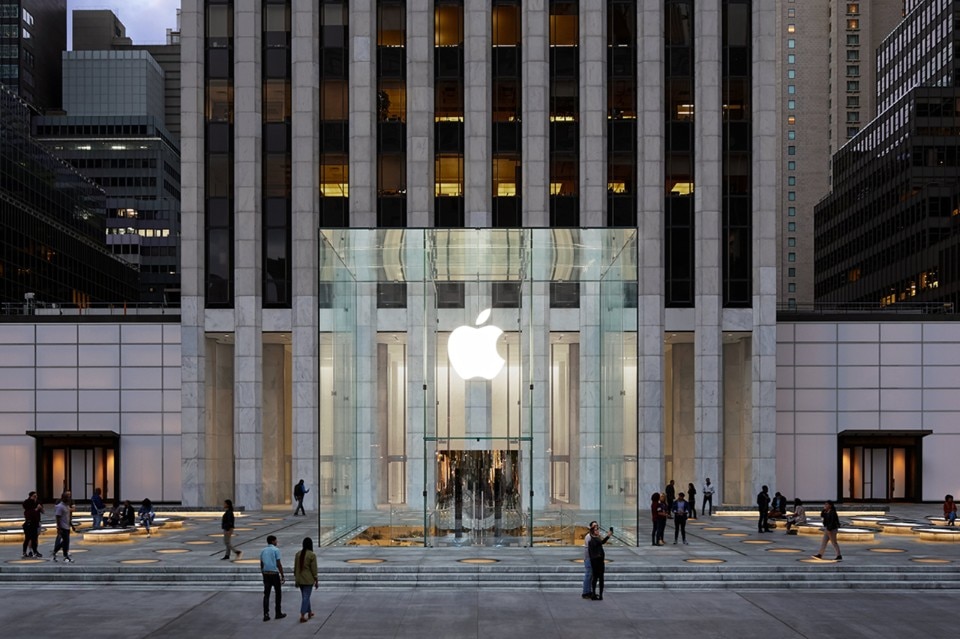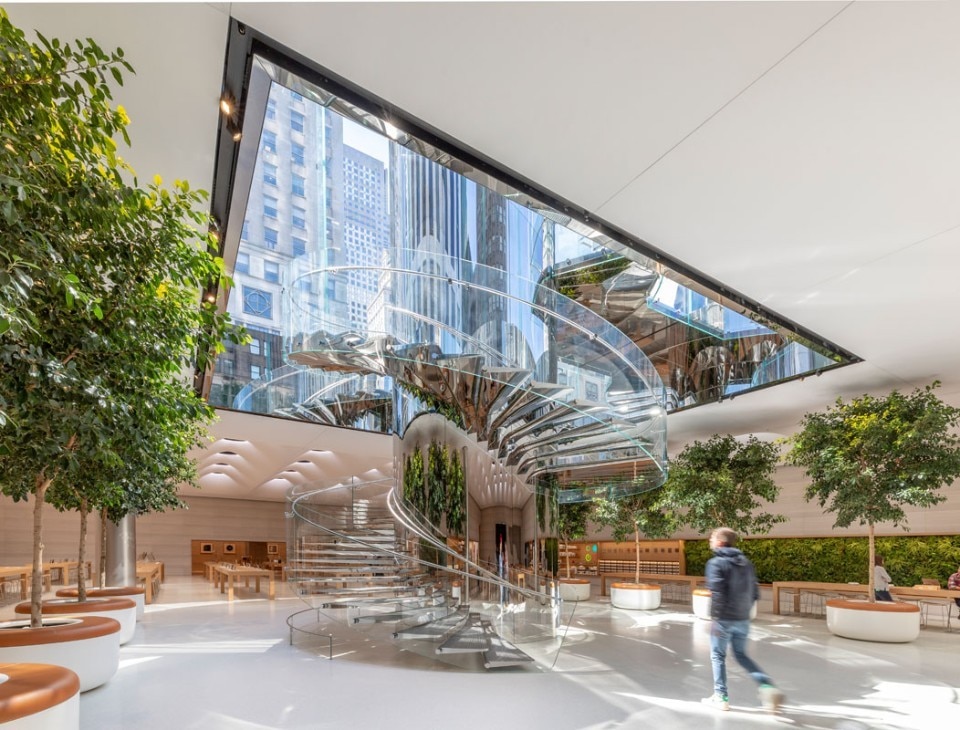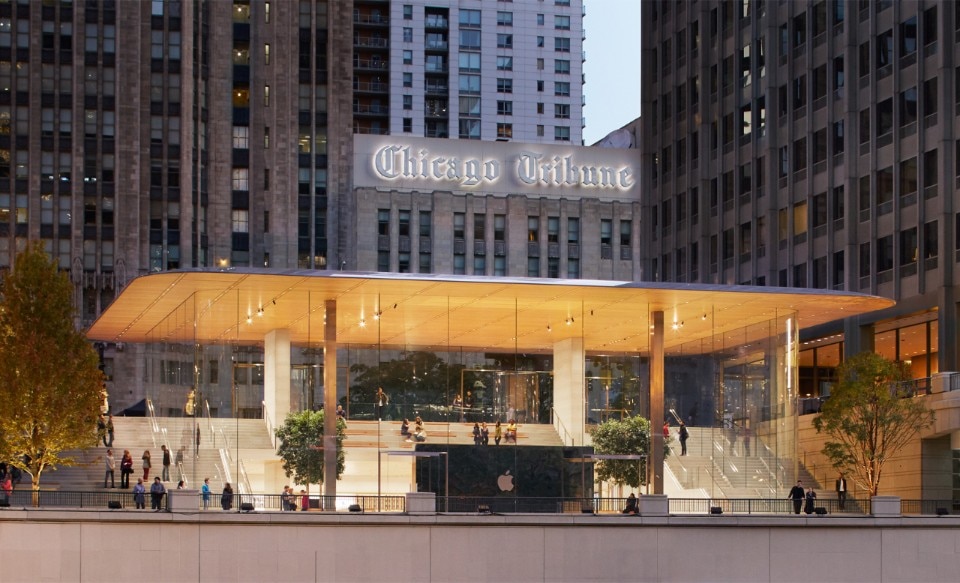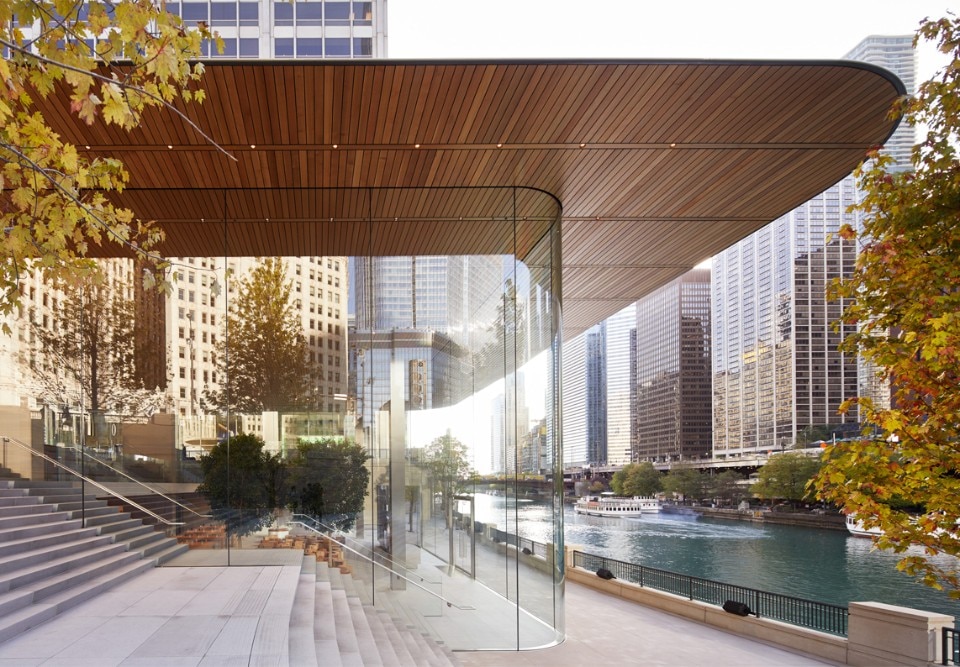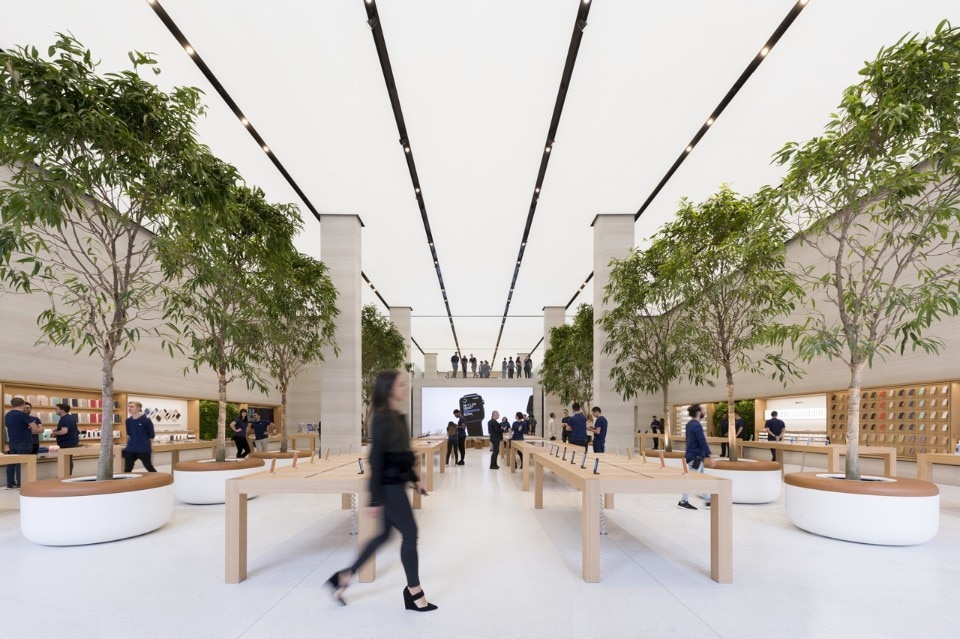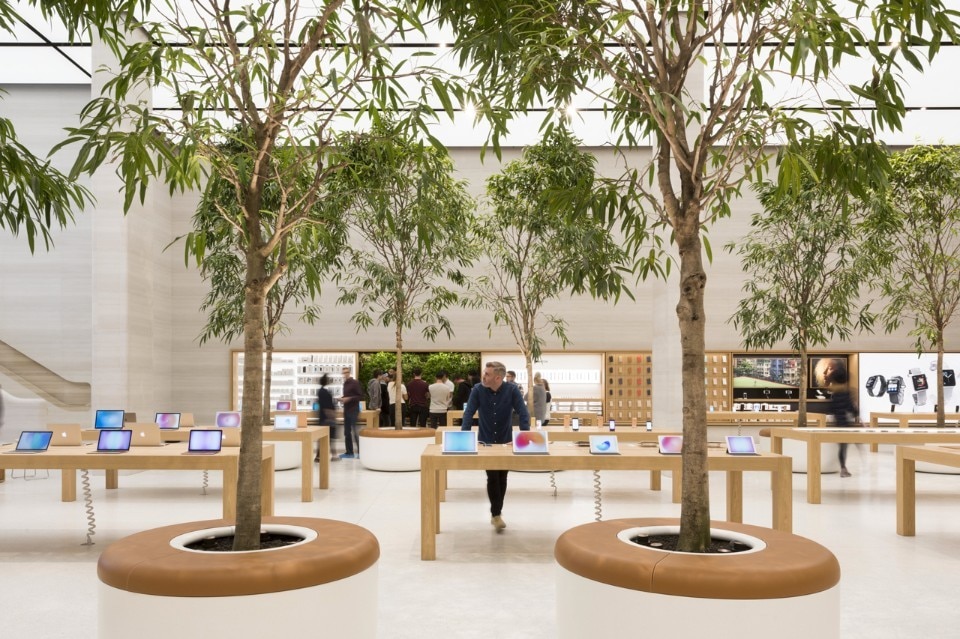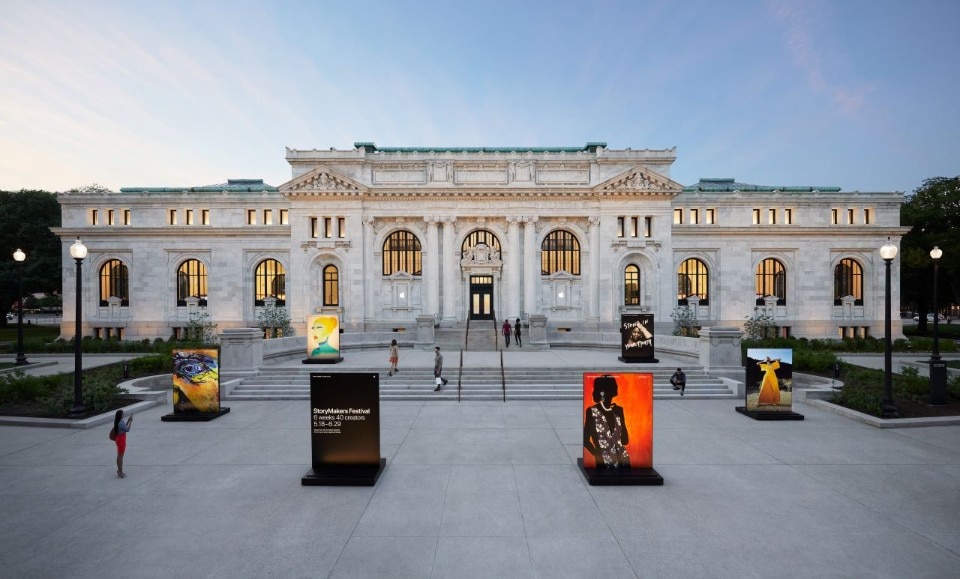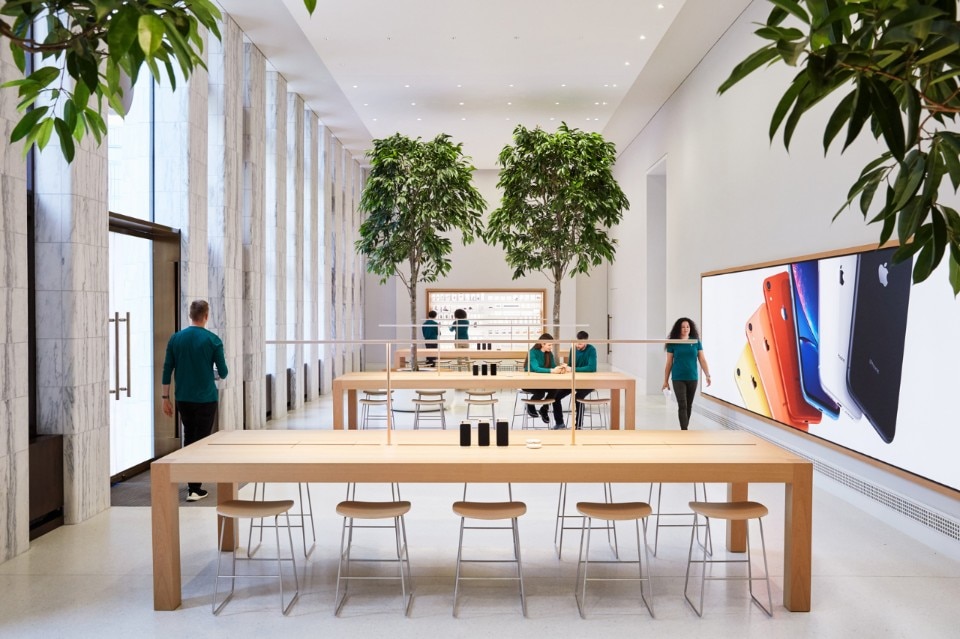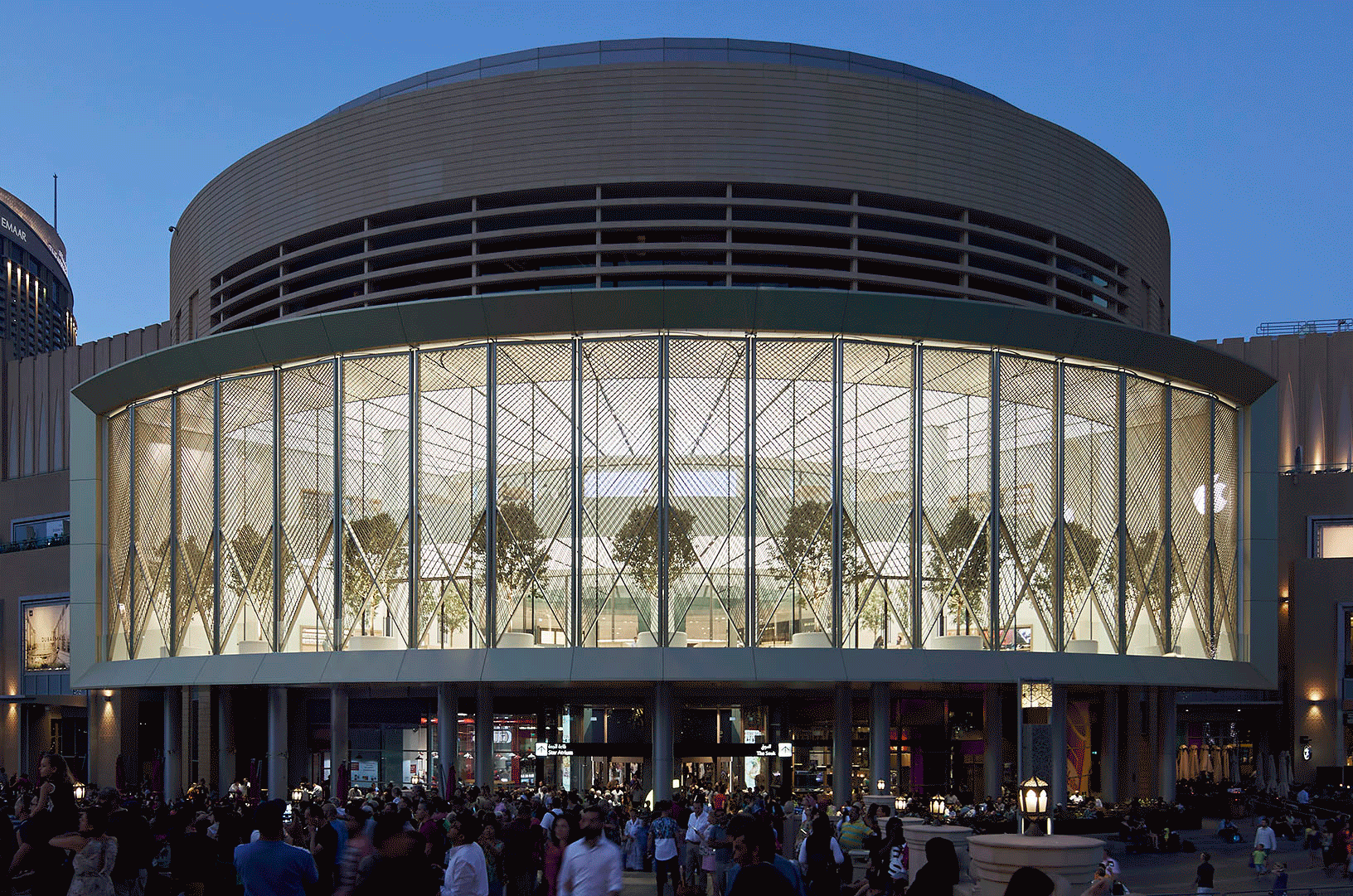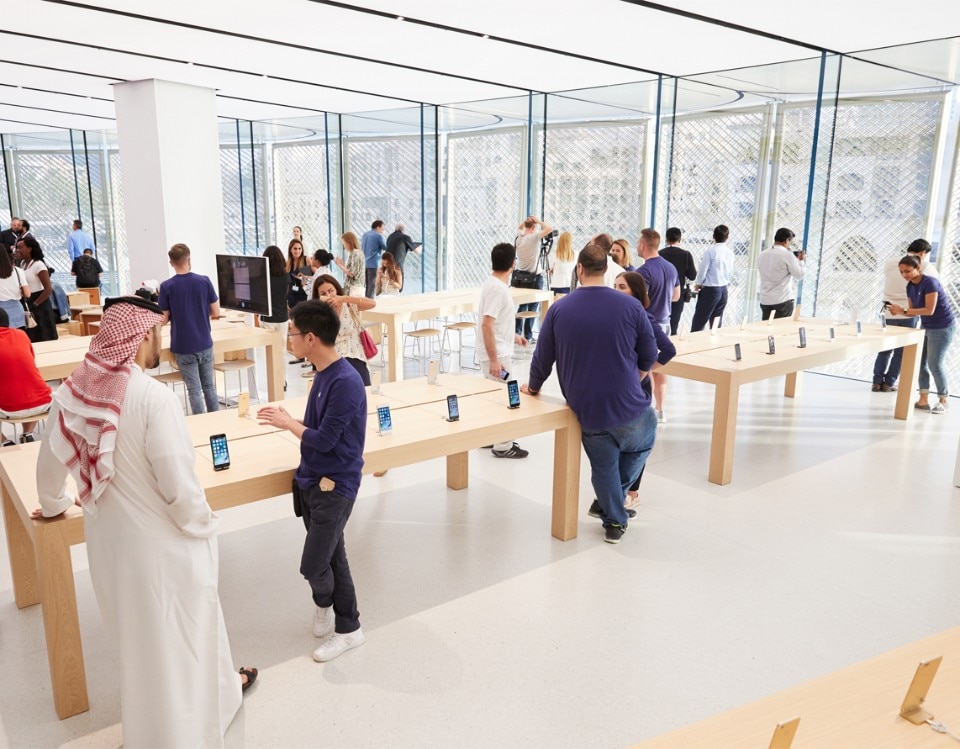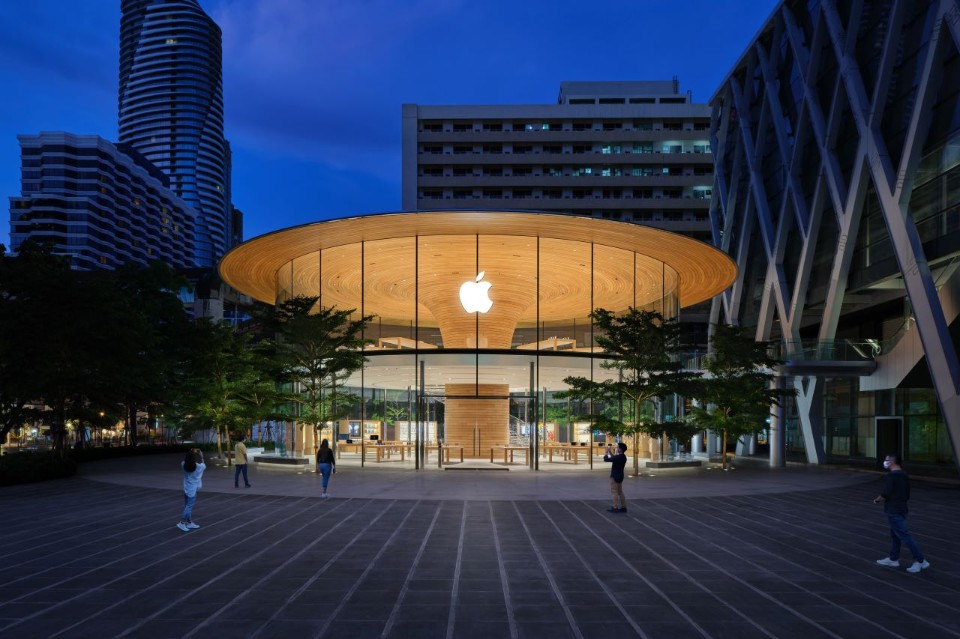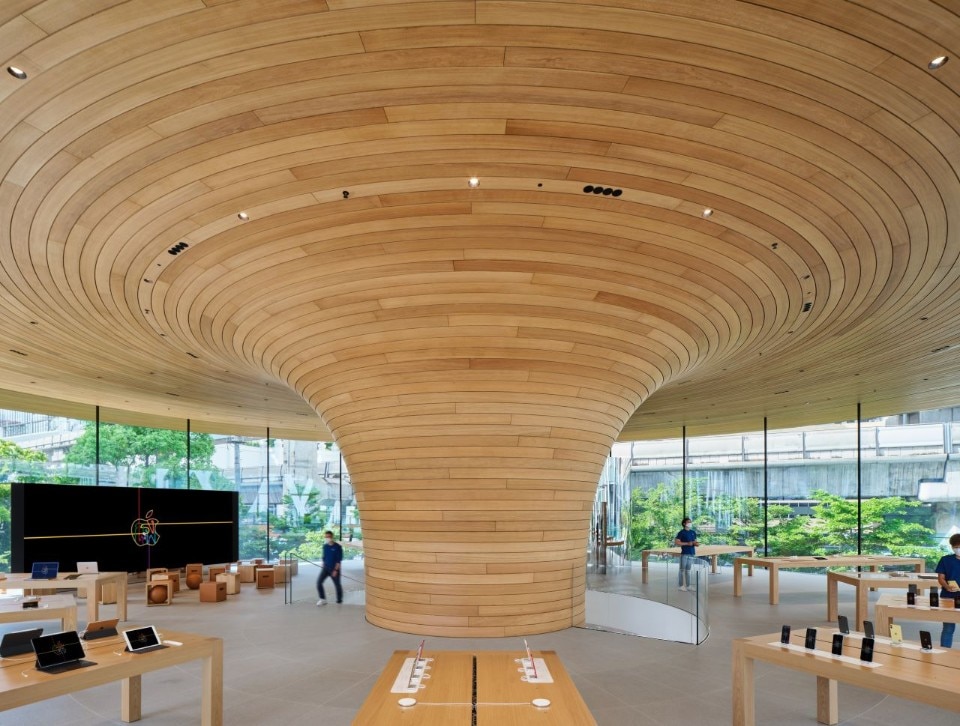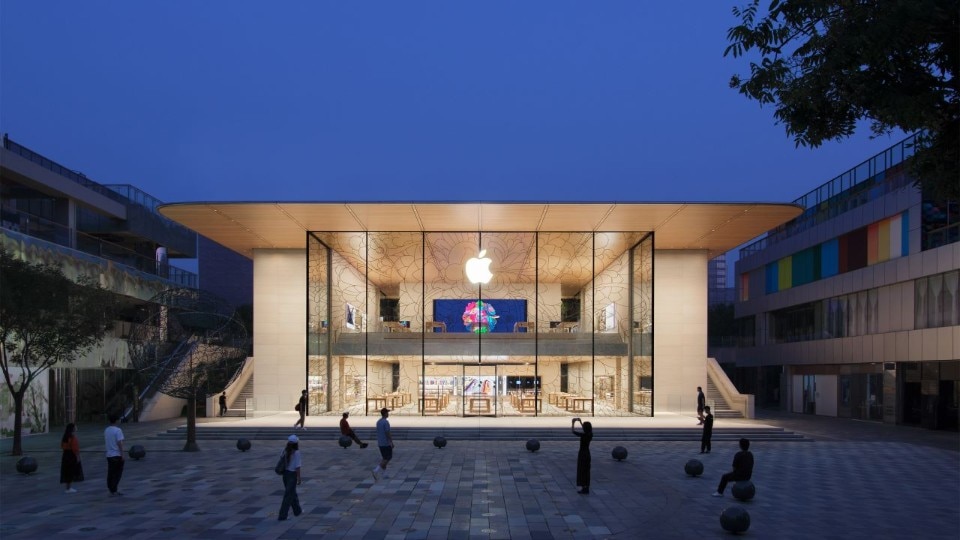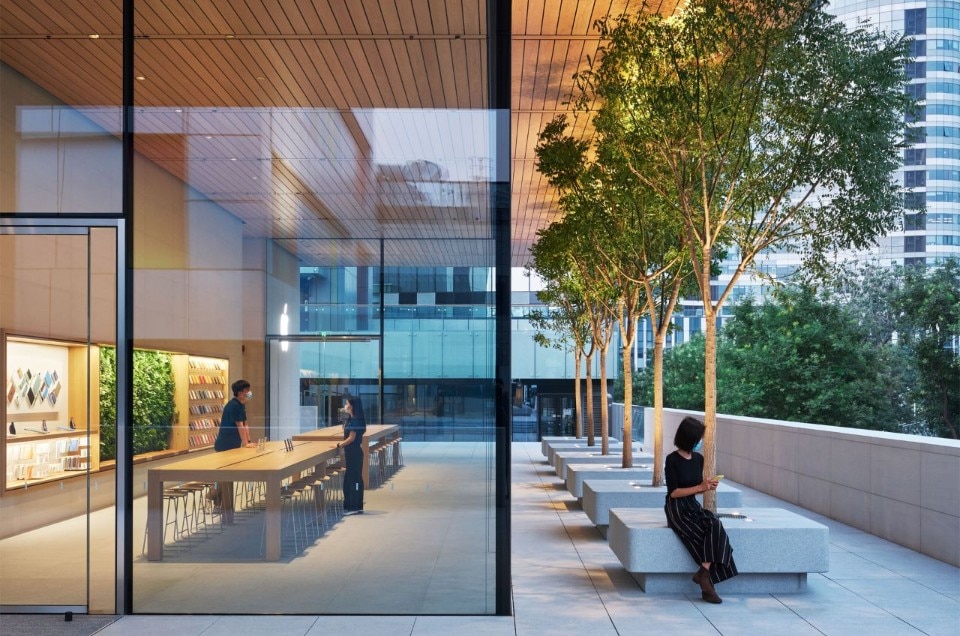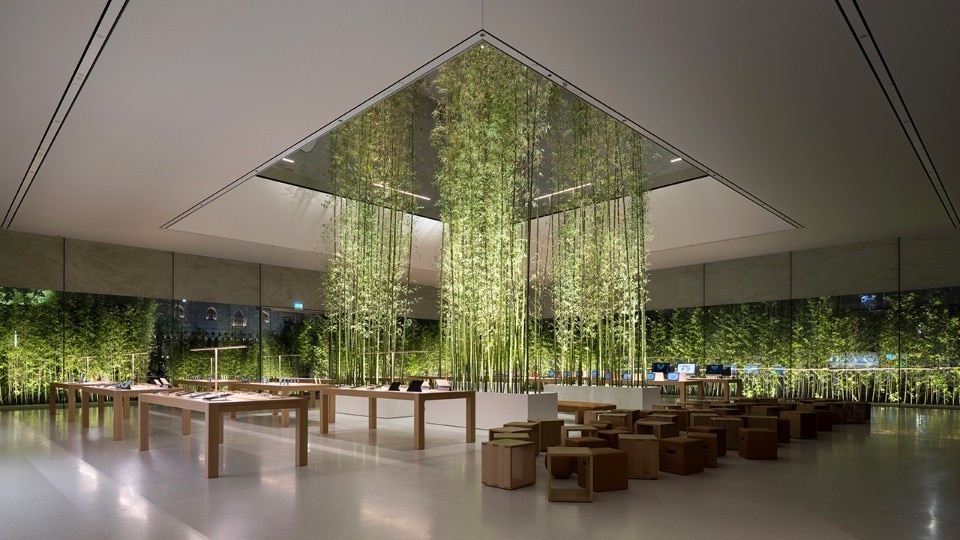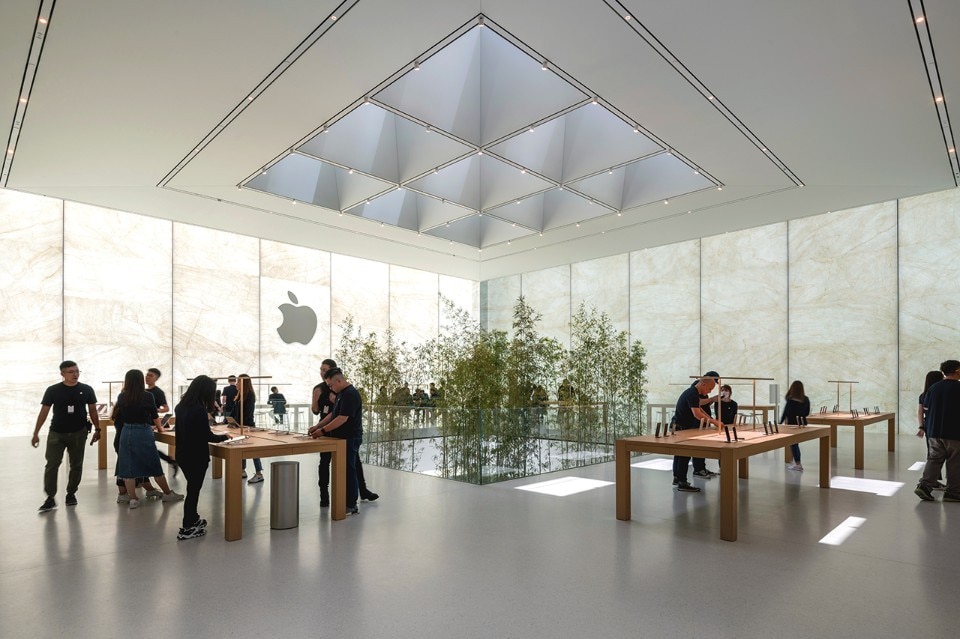The Apple Store’s debut coincides with a new era for the Cupertino company, one where it goes from being a cult computer company to a manufacturer of pop devices capable of changing our habits. In 2001 Steve Jobs launched the iPod in October, but it was a few months earlier, in May, in a hotel in Tysons Corner, Virginia, that the Apple’s co-founder met with the press to launch the first Apple shop, located on the second floor of a local shopping mall.
On May 19, the store in Glendale, California, also opens in a shopping mall. Thus a real Apple model began to emerge, changing the idea of sales space and the relationship between user and IT company.
Originally conceived as an experiment, the centre in Virginia has been the forerunner of all the brand’s other shops. The most recent opening in Singapore: Marina Bay Sands is the third Apple store in the eastern city-state after Orchard Road and Apple Jewel Changi Airport. Located in the bay near the hotel designed by Moshe Safdie, it is the first Apple shop that seems to float on the water, with a very different structure from the others of the American brand.
Designed by Foster + Partners, the architecture is a self-supporting dome made entirely of glass, offering a panoramic view of the landscape. With a zenithal opening that lets light through, the Marina Bay Sands is inspired by the Pantheon in Rome and offers lessons with the team in the first underwater boardroom.
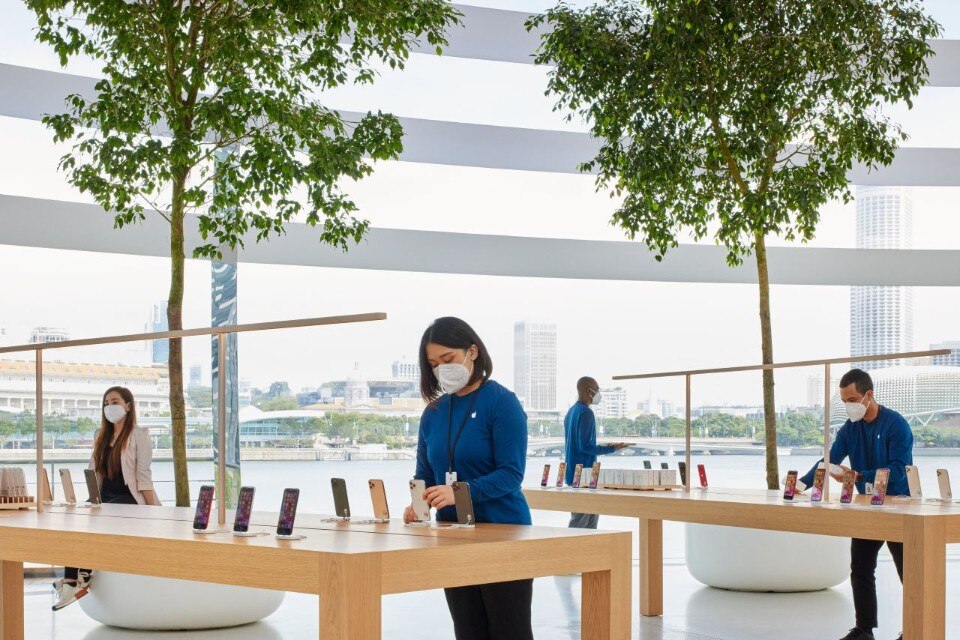
Currently 510 in 25 countries – 17 in Italy – the Apple shops have over the years become recognisable and inclusive places. From simple sale points, they became meeting places based on creativity and integrated into urban spaces, enhancing them through dedicated projects. In this concept of retail, the sale of the product is combined – and sometimes overtaken – by the experience and services that the store offers the customer.
The presence of a Genius Bar where assistance and repairs can be received is accompanied by a Studio in which an expert, the Creative, supports users in the editing of photographs and videos. Not only: a Forum, a Viewing Gallery and a Boardroom are part of the latest news, and the Today at Apple initiative, proposed in the most recent shops, includes events, performances and free educational meetings such as digital drawing lessons. A communicative strategy that is reflected in the architecture and interiors, characterized by precise stylistic lines: the “classic” wooden tables used as product displays, the linearity of the space, the light tones, have been integrated over the years by areas with video walls for meetings, large spaces and windows in constant dialogue with the outside to encourage a sense of inclusion.
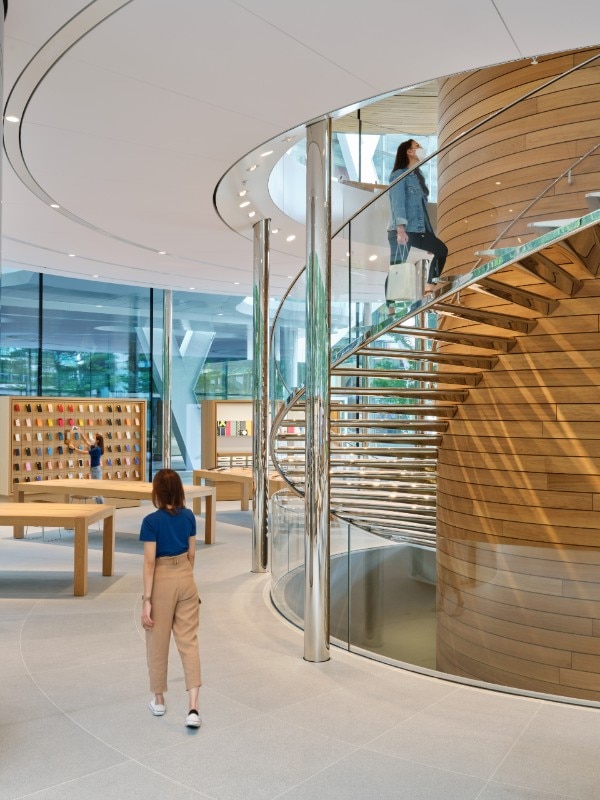
In some cases the stores have become the symbol of a city, such as New York’s iconic Fifth Avenue and its glass cube, now a landmark of the Big Apple, while the largest in the world is the Dubai Mall in the United Arab Emirates. Apple places its shops inside shopping malls or in historic buildings in the city centre – examples are those built in the old public library in Washington or in a late 19th century studio in London. Opened this year, in addition to the Marina Bay Sands, Apple Central World in Bangkok and Sanlitun in China.


